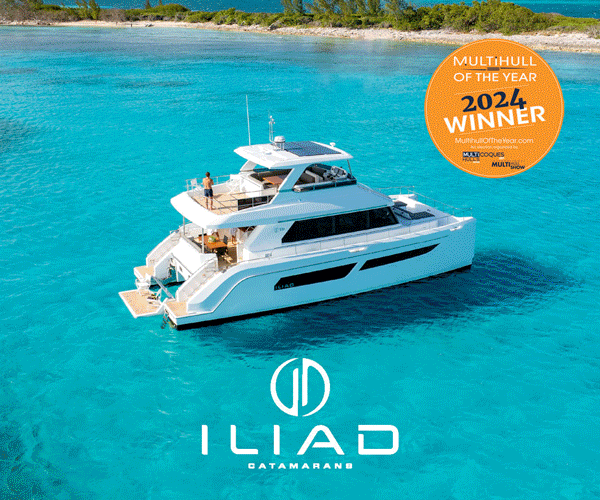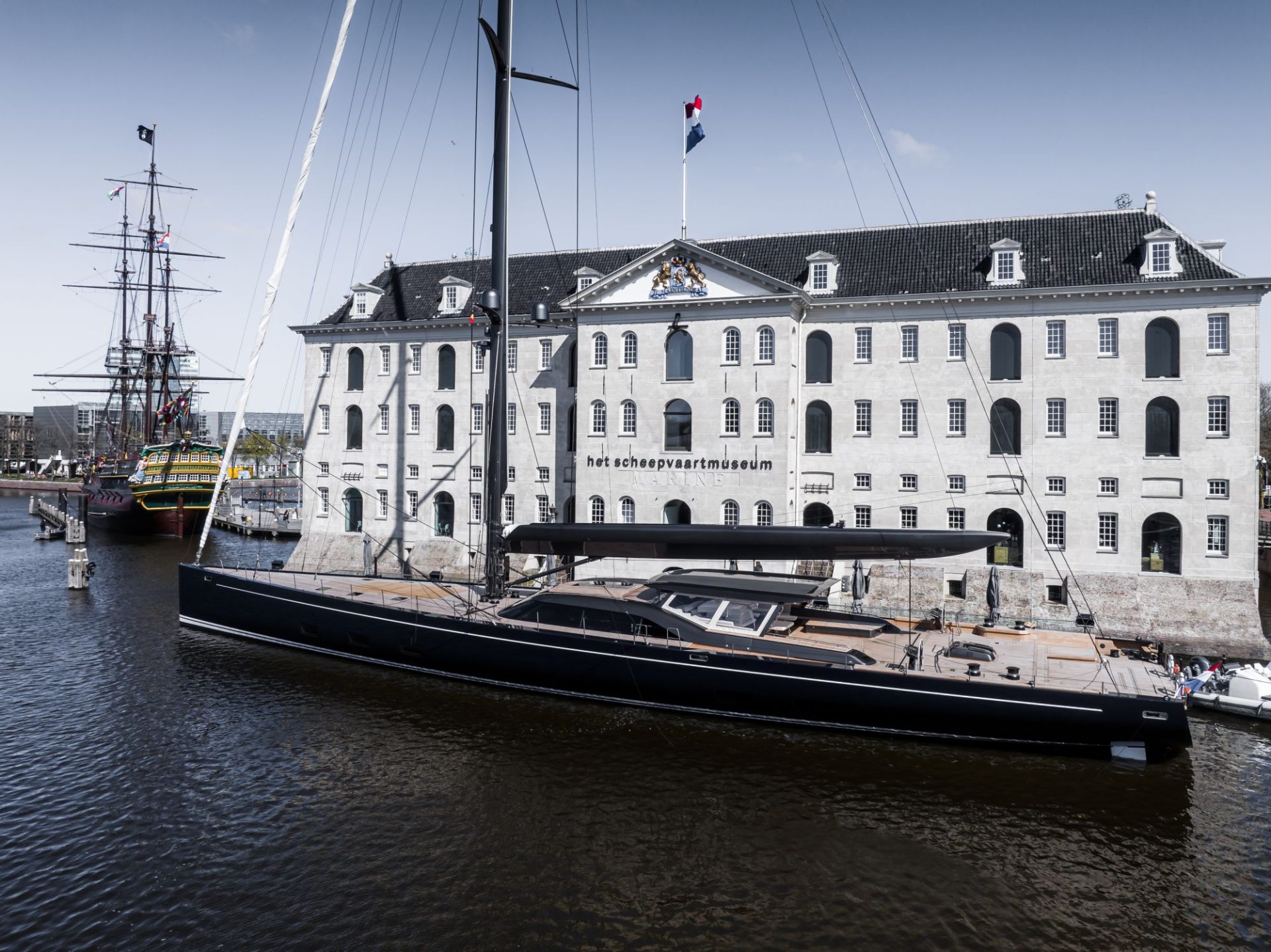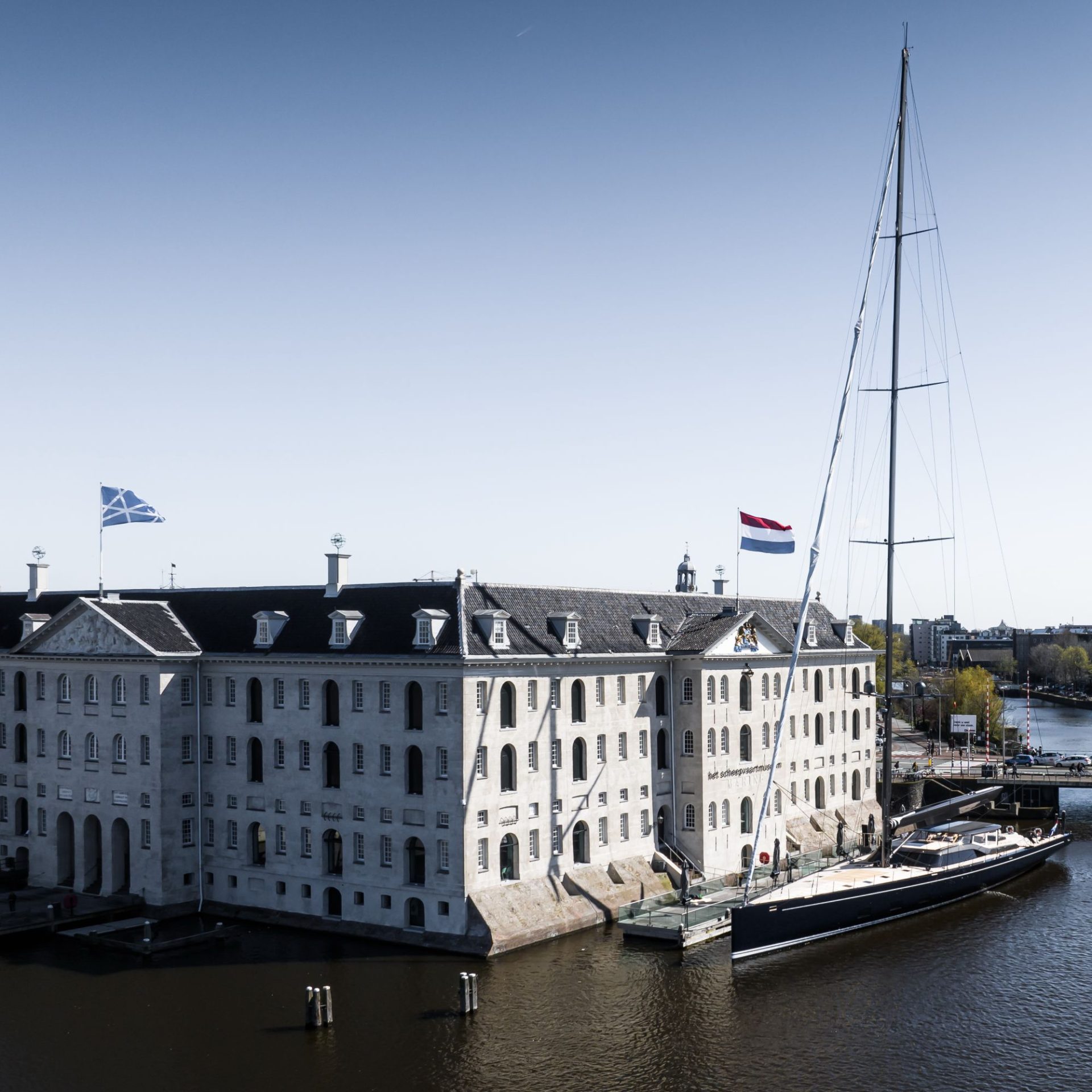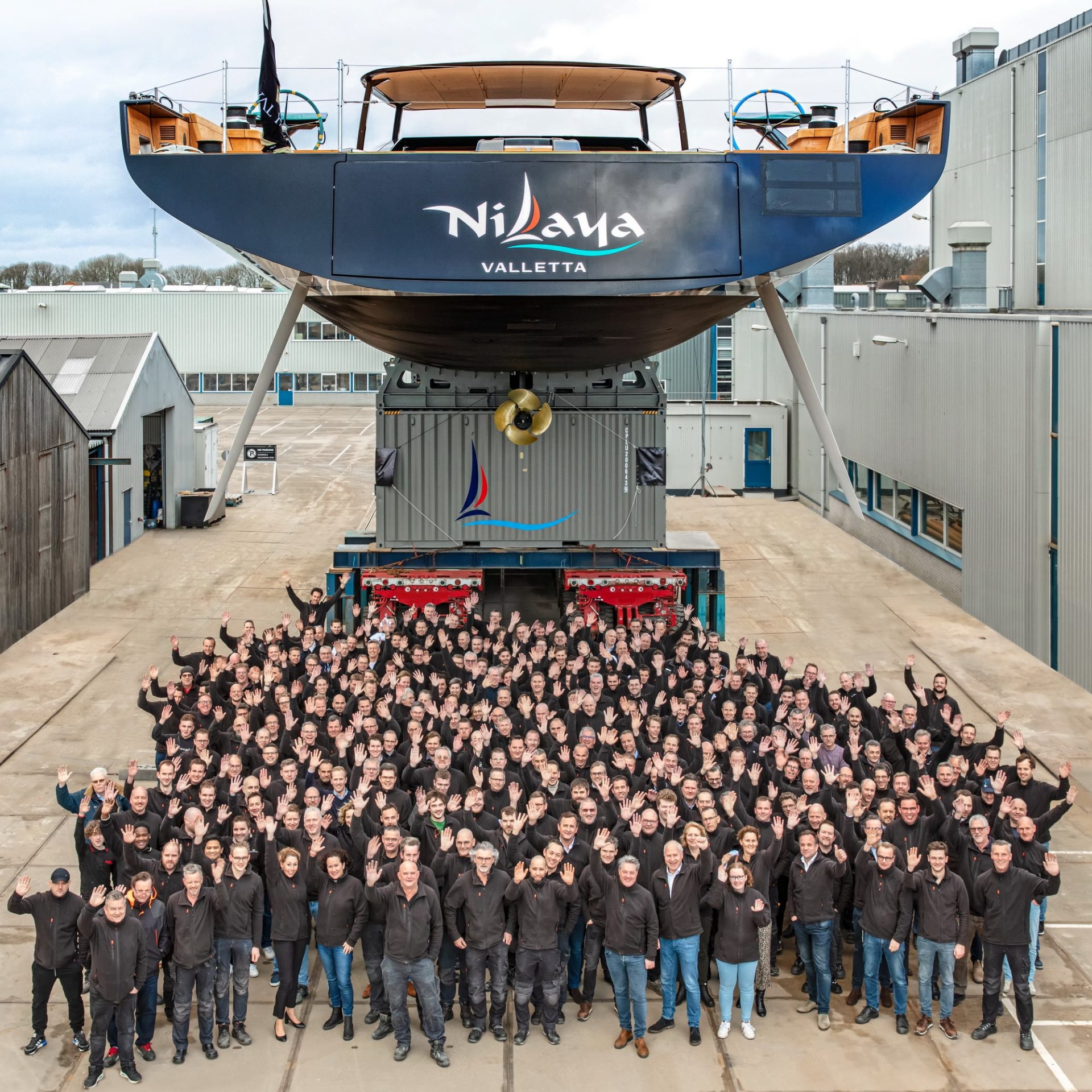Yacht as art
Royal Huisman presented the 46.8-metre sloop Nilaya at the National Maritime Museum in Amsterdam, the Netherlands.
Photography by Tom van Oossanen
06 April 2023
Nilaya, meaning blissful home in Sanskrit, will be a blissful home on the sea for her owners. The Dutch are a nation of seafarers whose culture has been profoundly shaped by the ocean over the past five centuries. They even invented yachting as a pastime and came up with the word jacht to describe a pleasure boat.
So, it is hardly surprising that the country takes immense pride in institutions such as Het Scheepvaartmuseum (National Maritime Museum) in Amsterdam, which house extensive collections of maritime art and artefacts illustrating this bond with all things nautical.
Royal Huisman CEO Jan Timmerman highlighted both the innovative construction methodology and the latest milestone for this ground-breaking project, saying “The success of the innovations with Nilaya paves the way to use this bold new approach for future builds.
“I am proud of the investment we have made in advanced engineering and of the way teams from Royal Huisman and Rondal advanced new solutions to meet the brief from very knowledgeable clients and designers.
“The owners as well deserve congratulations for pushing everyone to achieve just a little bit more and for encouraging innovation at every step. Nilaya will be the world’s lightest aluminium sailing superyacht for her length: she rewrites the script for high-performance superyachts.”
While many aluminium vessels have some composite parts, Nilaya is much more a hybrid.
The revolutionary element of the Featherlight™ method for this 46.8-metre (154-foot) sloop is not a single process or construction material, but a holistic light-weight method for delivering a global cruising yacht that will be completely at home competing in superyacht racing events.
This highly anticipated superyacht is the first to utilise Royal Huisman’s new Featherlight™ design and production method. Continuous weight monitoring throughout the build of Project 405 aka Reichel / Pugh – Nauta 154, confirms the Dutch builder has achieved its goal of slicing 11 percent of the weight of its typical advanced aluminium cruising yachts.
Most importantly, it has reduced weight without sacrificing stiffness or cutting corners on quality for this high-performance cruiser.
The shipyard’s revolutionary Featherlight™ method for this 46.8m / 154-foot sailing machine is not a single process or construction technique, but a holistic light weight approach combining various weight-saving solutions.
The Featherlight™ process makes use of Finite Element Analysis (FEA), a design methodology rooted in spacecraft technology. FEA modelling enabled selecting various construction materials and varied Alustar aluminium plate thicknesses and frame spacing to maximize hull stiffness while minimizing total displacement.
With engineering and weight management brought in-house, the approach was comprehensive, extending to lighting, insulation, and all mechanical systems.
The interior, too, benefited from careful weight analysis. All interior structural members utilise lightweight foam coring. This innovative approach narrows the displacement gap between aluminium and carbon composite yachts.
Comfortable, robust characteristics of an aluminium yacht are now a viable option for owners seeking true sailing performance.
Capturing the carbon fibre expertise of its sister company Rondal, Royal Huisman’s engineering team used this synergy to analyse and predict which structural components would be best made of composites or aluminium. For example, the entire 17.5-metre (57-foot) curvaceous coachroof and guest cockpit structure are carbon composite.
Likewise, the recessed tender well on the foredeck (that transforms to a seating area for cruising or a flush deck for racing) is also carbon composite as are a watertight bulkhead, crew entrance, twin rudders, the keel trunk and a cockpit bimini hardtop.
For any high-performance cruiser, a carbon fibre mast, boom, and standing rigging are critical to keeping weight as low and as centred as possible for optimal balance.
While Rondal has considerable carbon spar expertise, bringing the design of this component — and the sailmaker – into the process during the larger hull design phase is a page out of a maxi-racer’s playbook.
Nilaya is also the first yacht of this size range designed to take advantage of structured luff sail design pioneered by Doyle Sails, a choice that allowed the entire Rondal mast, rig, and components to be lighter — a key point considering her Panamax air draft.
To take advantage of the very narrow headsail sheeting angles possible, Rondal created a radical new curved carbon fibre spreader design that is both shorter and more aerodynamic than anything previously available.
Rondal also supplied new generation hybrid (carbon and aluminum) captive winches, hatches and various sail handling gear. Most deck hardware is titanium.
Nilaya’s racy, low profile with its straight bow, wide transom, and twin rudders, echoes the look of her owners’ previous highly successful maxi-racer of the same name. Not surprisingly, she is from the boards of the same naval architecture and design firms, Reichel / Pugh and Nauta, both firms with impressive reputations for high-performance sailing yachts.
Exploring all the options for a luxurious performance cruiser also capable of podium finishes at superyacht regattas, the team made full design studies for the yacht in both carbon and aluminium using computational fluid dynamics (CFD) to optimise hull shape and balance.
Royal Huisman’s Featherlight™ method, an evolution of nearly 60 years of aluminium yacht-building experience melded with the latest carbon technology, provides her owners the best of both materials for a no-compromise yacht.









